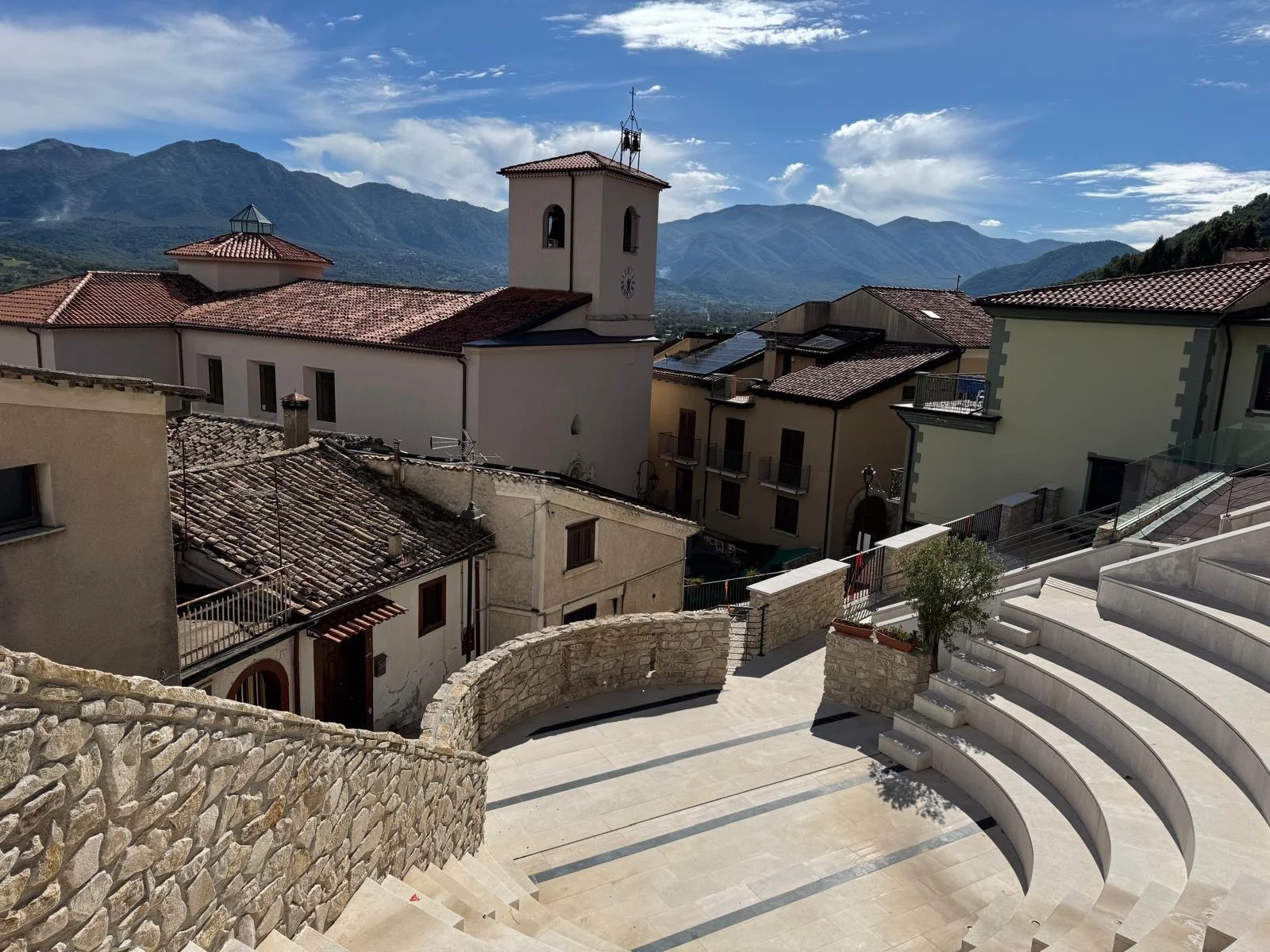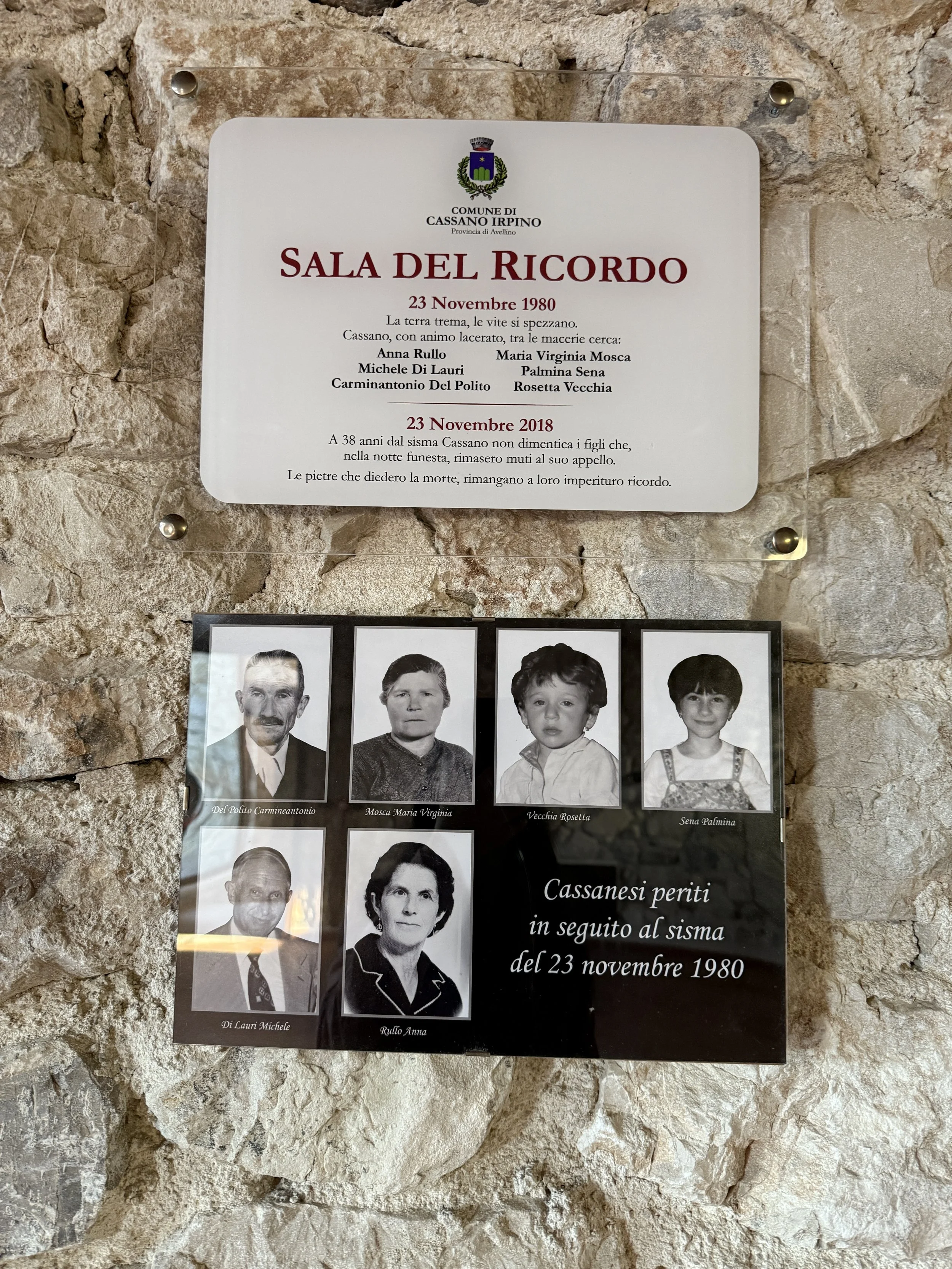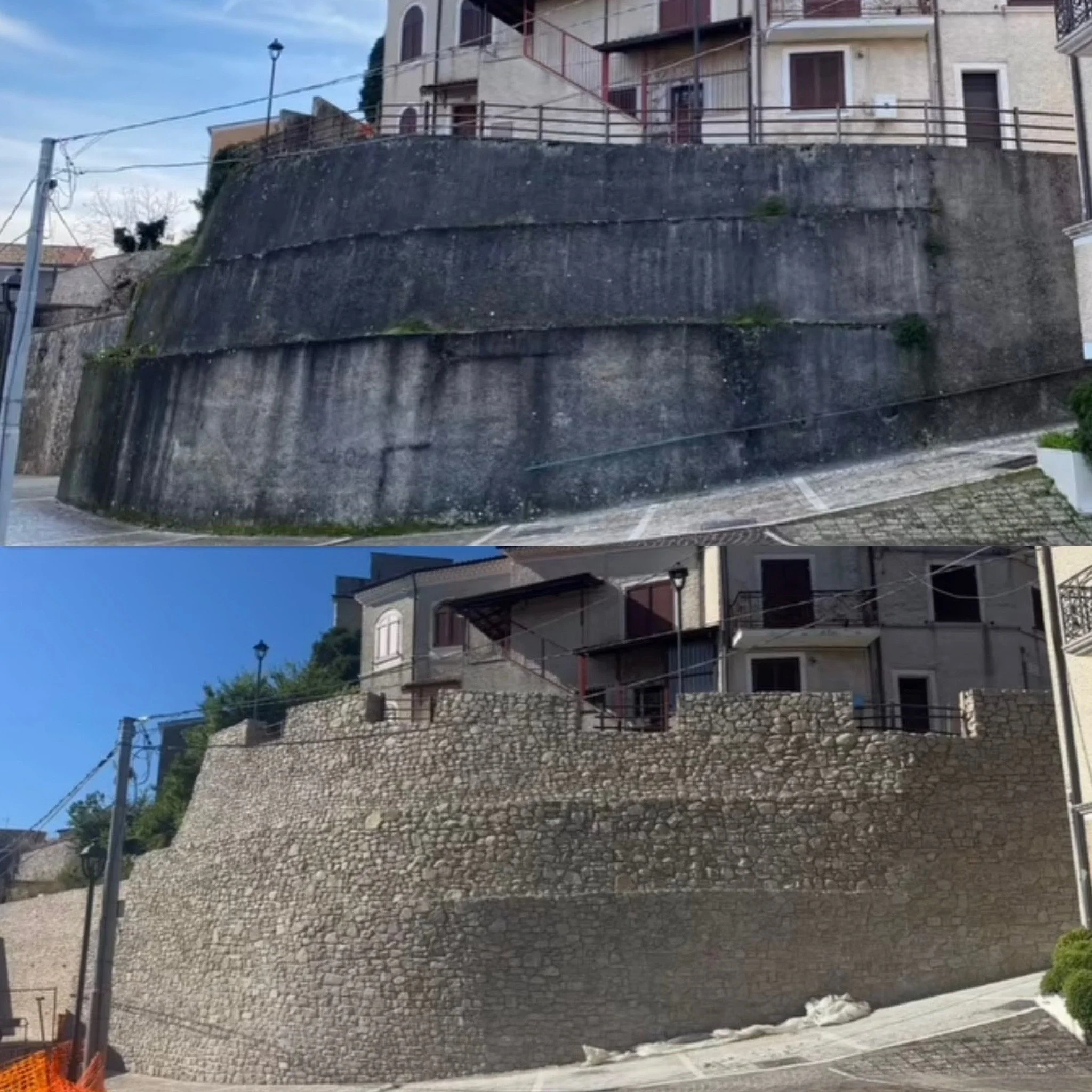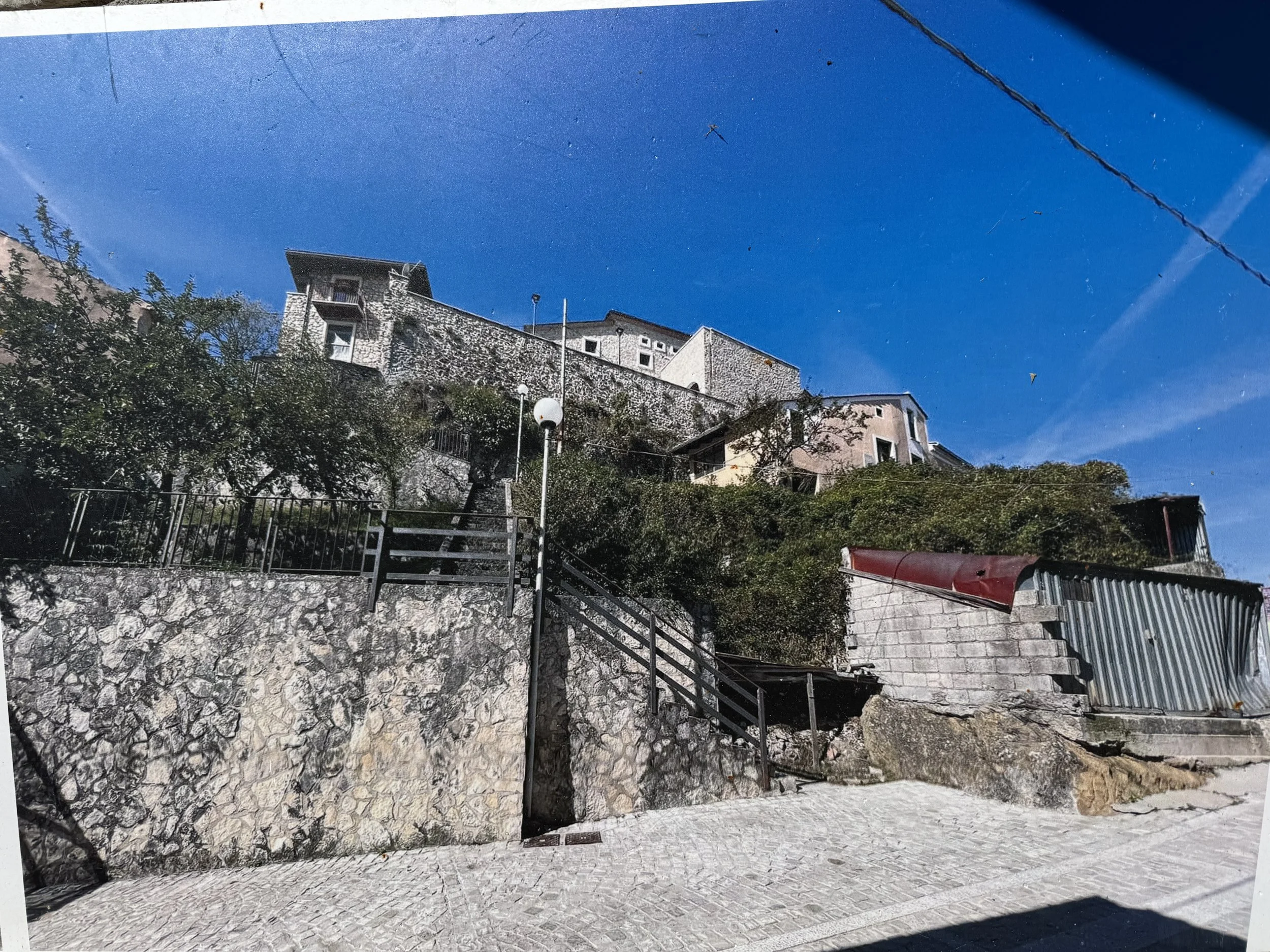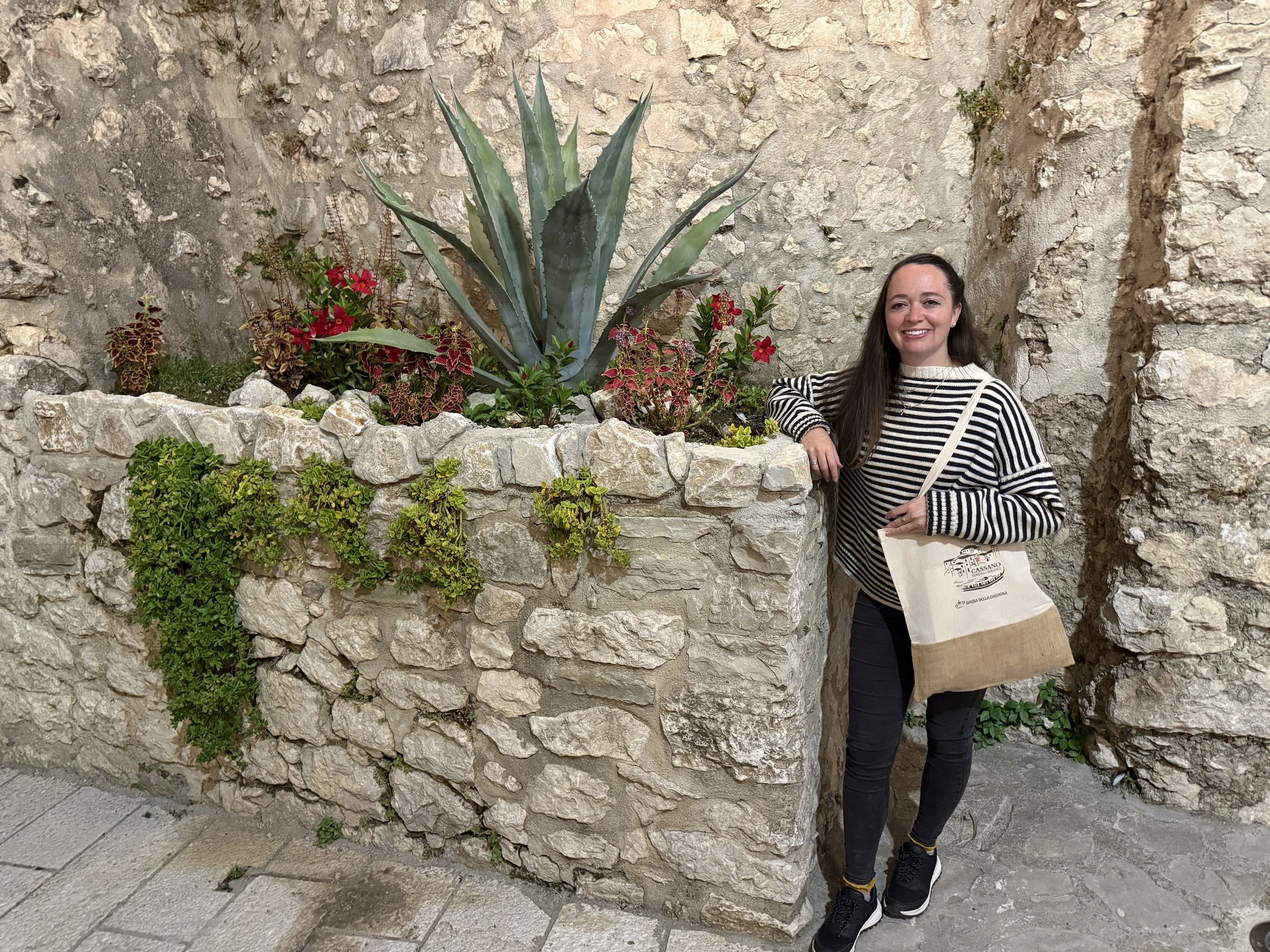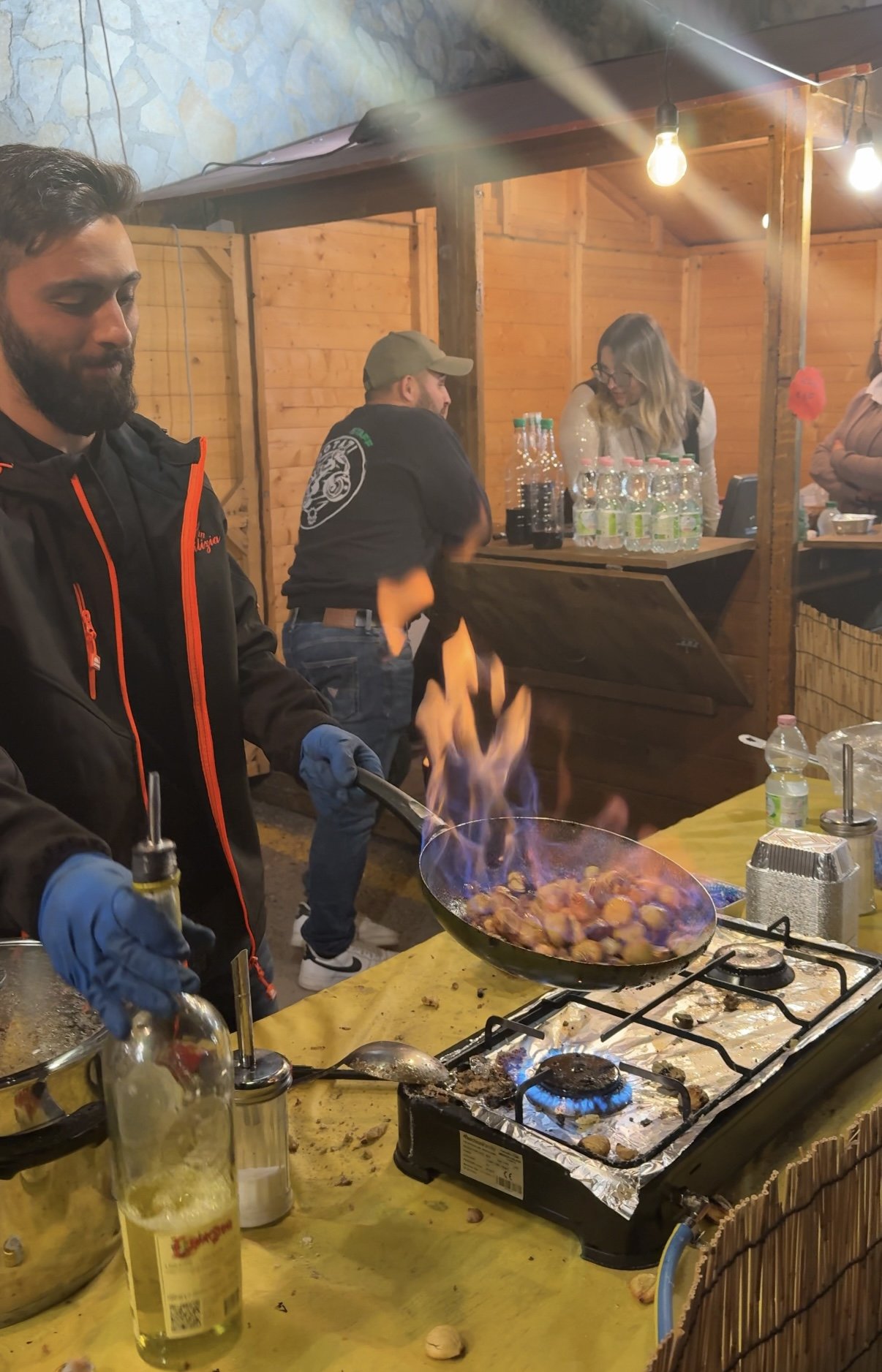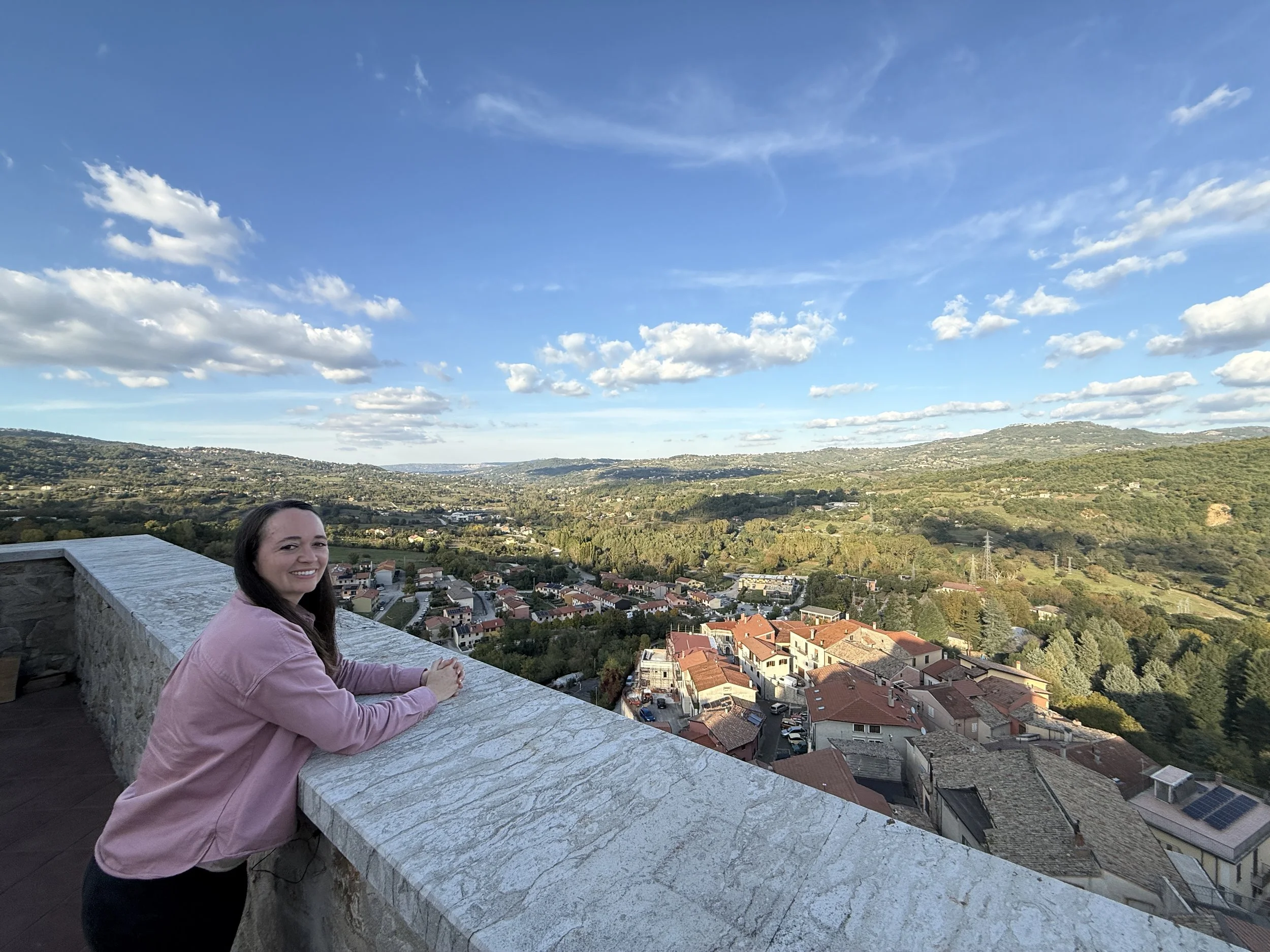What does it take to be a visionary? Lessons from Cassano Irpino in the Appenine Mountains
Photo taken from the new Amphitheatre in Cassano Irpino, Italy, October 2025
Very few people are truly visionary. It takes more than binging Diary Of A CEO episodes and coffee shop conference calls. Sometimes it takes an actual earthquake.
First, I’ll set the scene. Cassano Irpino is a breathtakingly beautiful ancient village in the heart of the Appenine Mountains, 50 miles east of Naples and an hour’s drive from the Amalfi coast. It is the permanent home to under 1,000 people, but many villagers and visitors return each year for the annual festivals. This includes me and my Dad, Pasquale Sena, who was born at home here in 1951 (there’s a story I could tell about the exact date, but that’s for another time).
Photo of the memorial to the 1980 earthquake victims from Cassano Irpino
Cassano was devastated by the 1980 Irpina earthquake. At least 2,483 lives were lost across the mountainous region, including six villagers from Cassano, while around 7,700 injuries were reported. The 6.9 magnitude also brought down many buildings in the region, leaving thousands homeless and forcing thousands more to leave permanently for new pastures.
The Italian government spent 59 trillion lire on reconstruction (equivalent to 151 billion euros in 2020), while West Germany contributed 32 million USD and the United States sent a further 70 million USD.
However - and perhaps unsurprisingly - billions and billions of this funding was lost to the Camorra (Mafia) who infiltrated the construction industry. Yet more was lost to political bribes, while a new social class of millionaires sprung up in the region. It is estimated that only 9.6 billion USD was actually spent on people’s needs.
Infrastructure was rebuilt on a shoe-string, if it was rebuilt at all. Concrete was used as a necessity - quick and cheap - but aesthetically incongruous, creating ugly scars across the picturesque landscape.
Photo of me with Mayor Salvatore Vecchia at the 47th annual Chestnut Festival in October 2025
Here’s where Mayor Salvatore Vecchia comes into the story. Born and raised in Cassano, he witnessed the village struggle through the disaster and aftermath. As such, he has been driven by a vision to restore and even enhance its beauty.
Here are just a few examples of his work in the past few years:
Brutalist cement retaining walls, hastily rebuilt in the 80s and 90s, have been expertly coated in gorgeous stonework:
Before and after photos. Credit: Salvatorre Vecchia
Wasteland formerly used as a dumping ground by fly-tippers is being turned into communal gardens:
Wasteland beneath the village square is being prepared for communal gardens to feed the villagers
In the place of collapsed and abandoned houses has been built a beautiful amphitheatre, which not only enhances the beauty of the village, but also its functionality:
Before: Abandoned scrubland and derelict buildings
After: A magnificent amphitheatre for musical and theatrical performances
In fact, every corner of the village has been blessed with new life, carefully curated to authentically enhance its natural beauty:
Thoughtful planting arrangement such as this one are scattered throughout the village
And Mayor Vecchia isn’t done yet.
Earlier this month at the Chestnut Festival he announced yet another brilliant concept - a hologram museum set in Cassano’s ancient castle that will tell the story of the village’s rich history. This will give locals a sense of pride and belonging, while giving visitors yet another reason to make their journey up the winding mountain roads.
What is most heartening to me is that the physical changes aren’t the only manifestation of this vision: the population has stabilised after years of decline, young unemployment is down, and the Festival saw its biggest crowd in years.
I’ve been visiting Cassano on average once a year since birth. 10 years ago the village was in a sorry state - even the less salubrious street-traders had given up on the village; there was simply no trade to be made.
Map of the Chestnut Festival displaying attractions such as food and music stalls
This year I’ve never seen it so full of life, youth, and optimism. Throughout the two day Festival the streets, squares, and alleyways were filled to bursting with thousands of local and visitors, basking in wonderful music and lights, while being treated to delicious food and spectacular fireworks. A myriad of attractions and artists were spread around the village catering to people of all ages: children’s shows, classical music, marching bands, traditional Italian musicians, and even an American swing inspired group!
Meanwhile the food left everyone fat and happy: many home-cooked pastas, truffle and cheese on toast, roasted suckling pig, gelatos, and of course, roasted chestnuts - the inspiration for the festival.
Chestnuts roasting on an open fire…
So, how has Mayor Vecchia done it? I think there are three key ingredients:
Vision: He set out his vision for the village and got buy in from the local population and international extended family, myself included.
Talent: He is an Advocate (lawyer) by trade and knows how to get funding into the village from various local, national, and European sources. Crucially, he also knows how to spend the funding appropriately.
Support: He is supported by a brilliant team at the Town Hall who have all worked tirelessly for years on this shared vision. In the EOS world they are known as integrators who ensure execution of the vision.
You really need all three ingredients to call yourself a visionary. So, do you have what it takes?
Me at the top of the castle, overlooking my Dad’s house in the sunshine below

